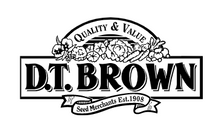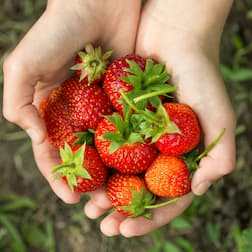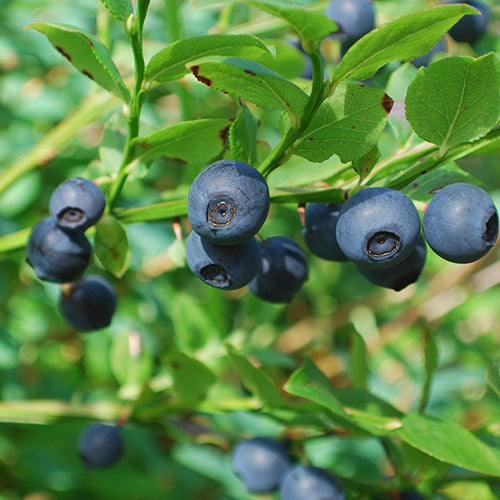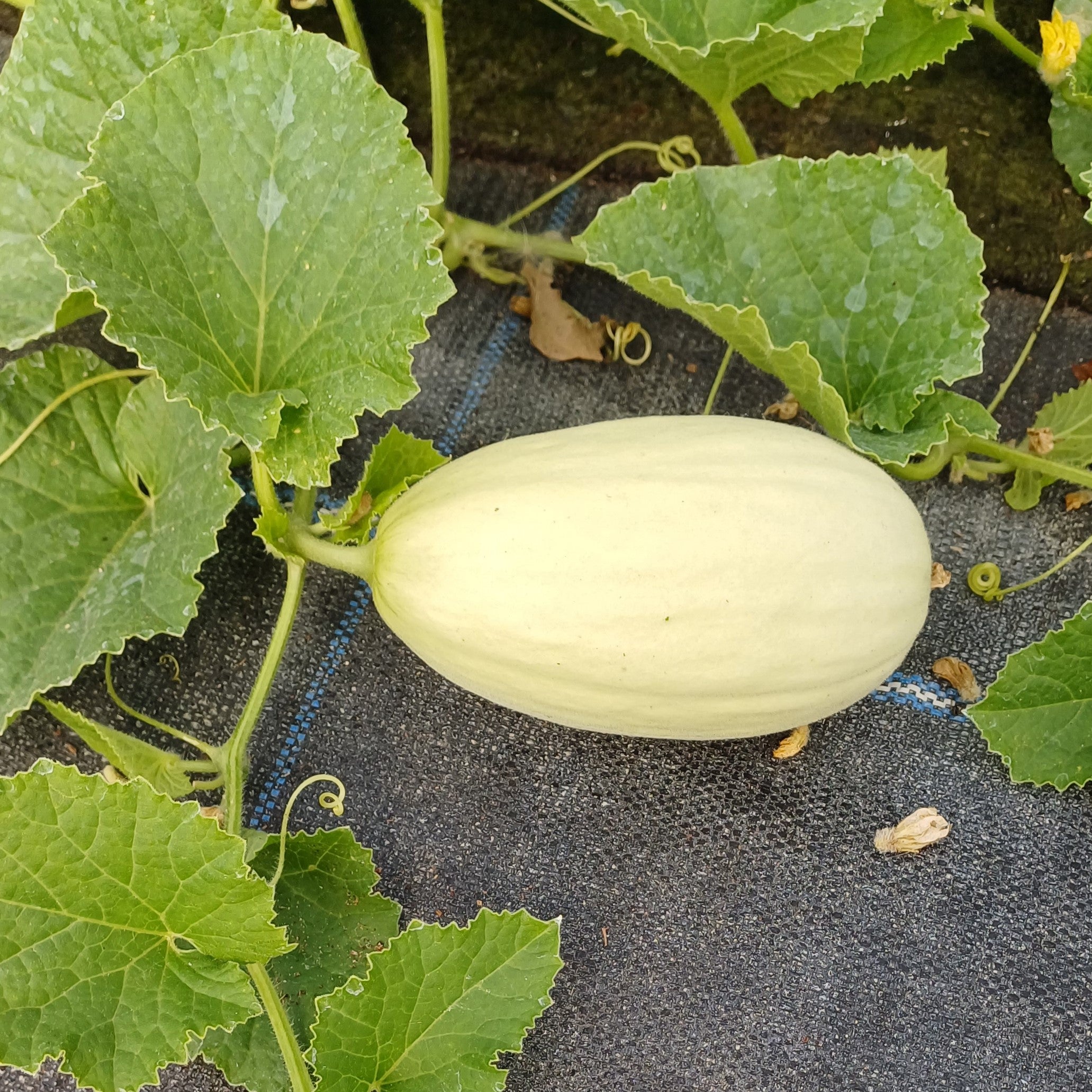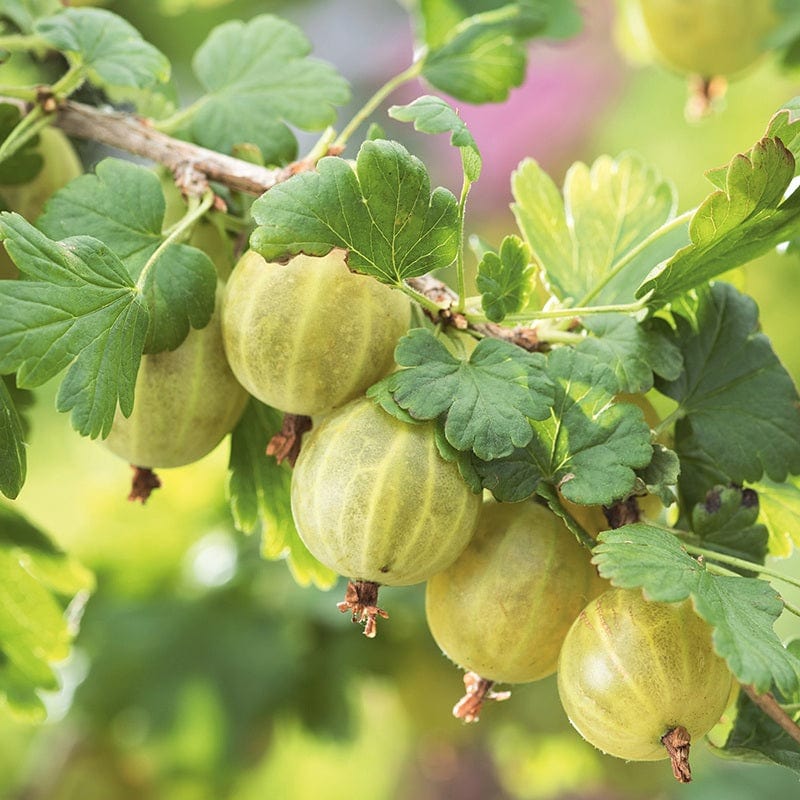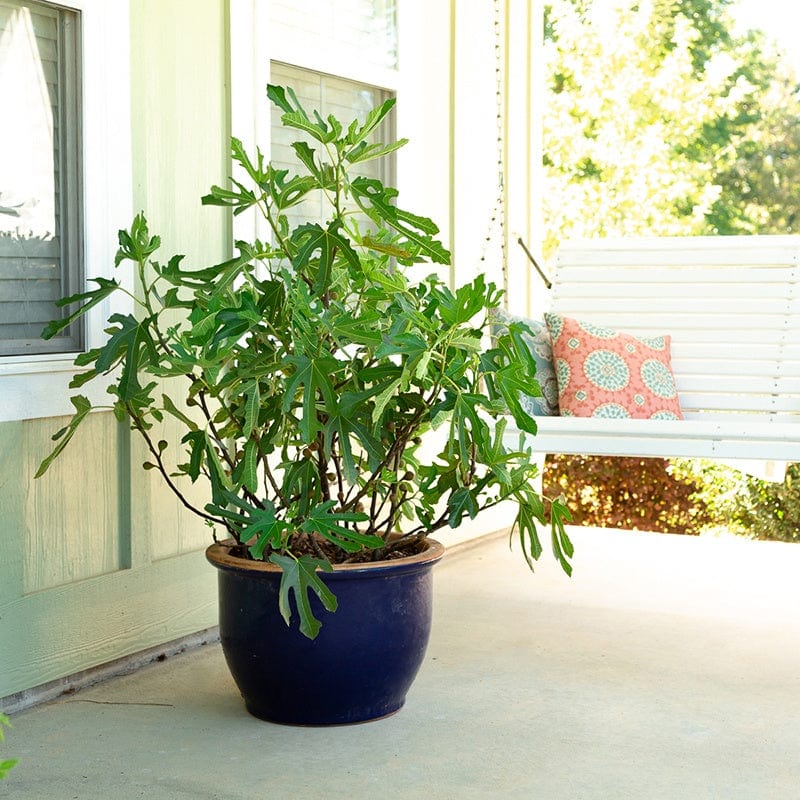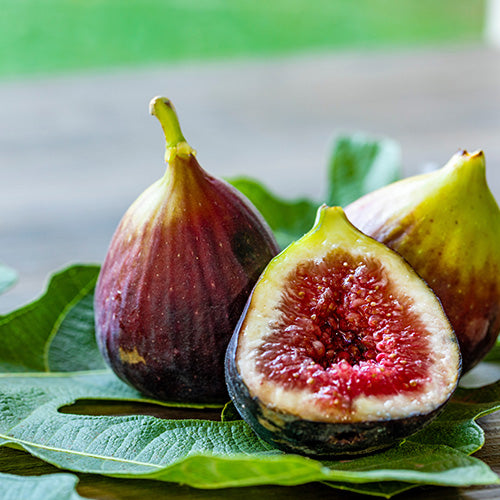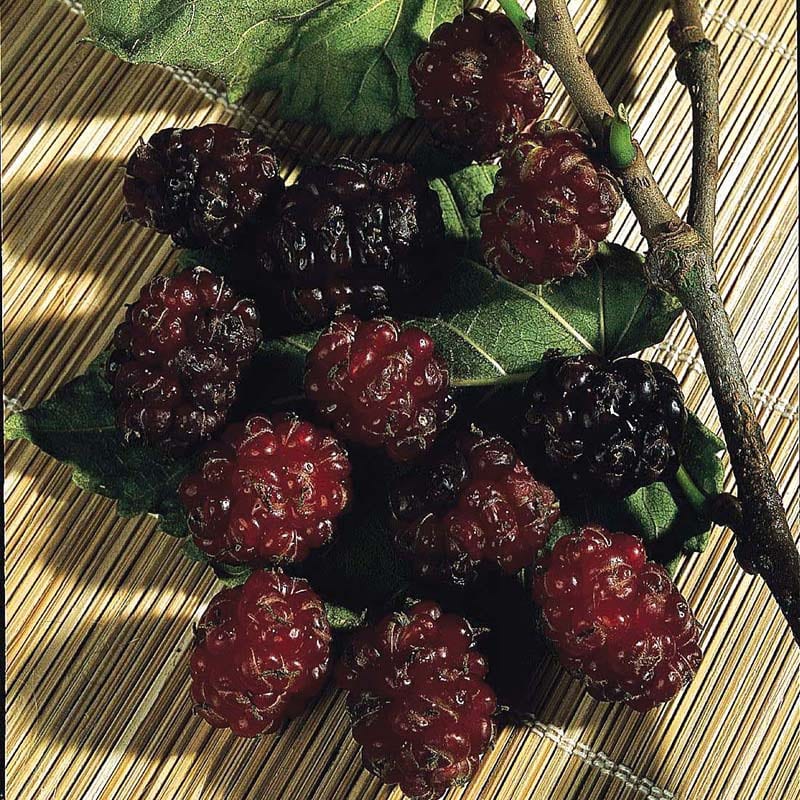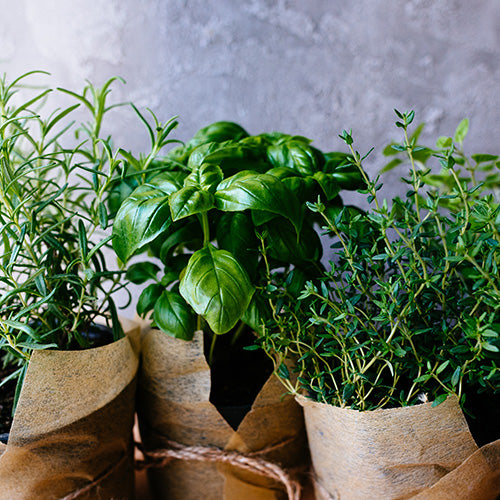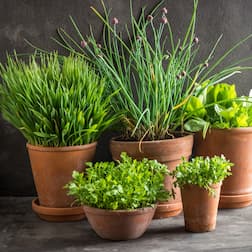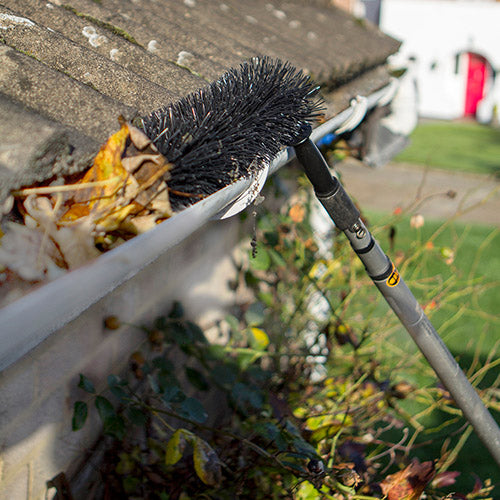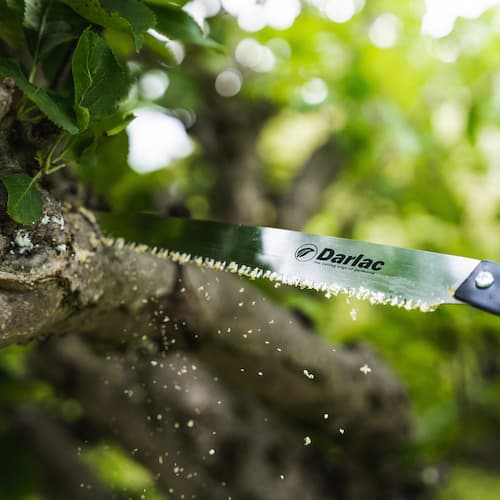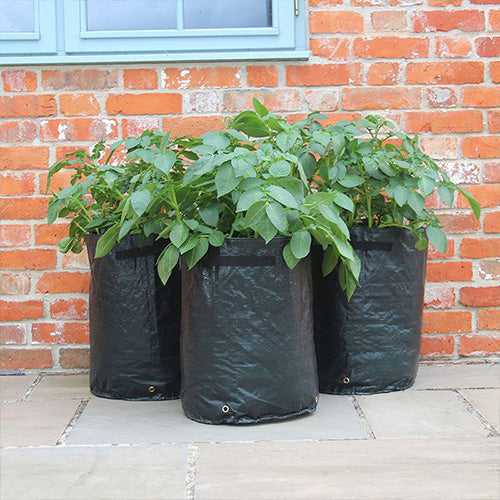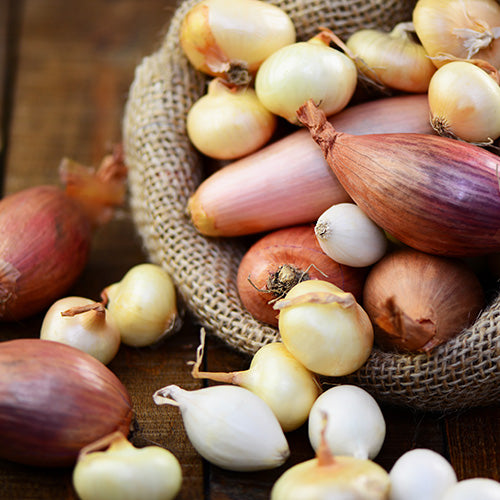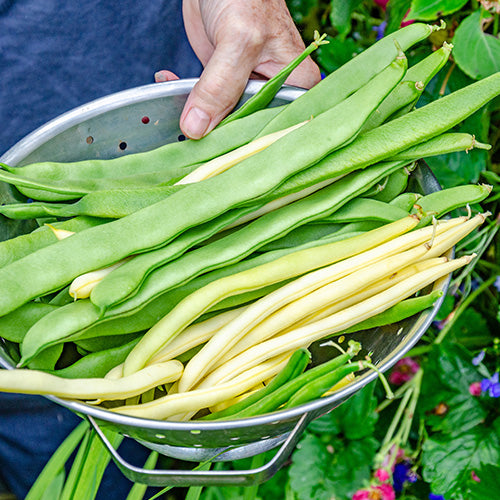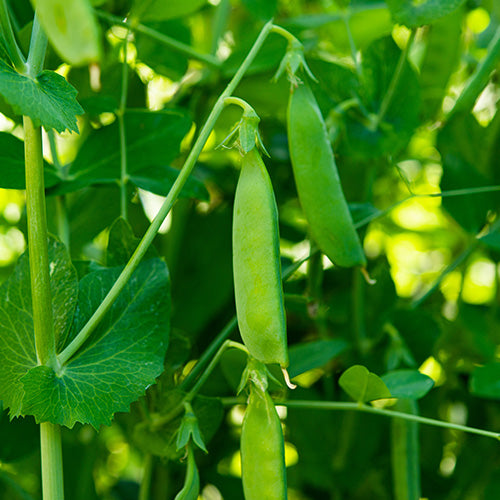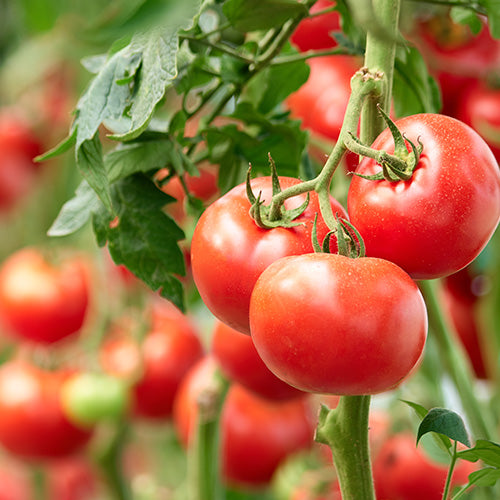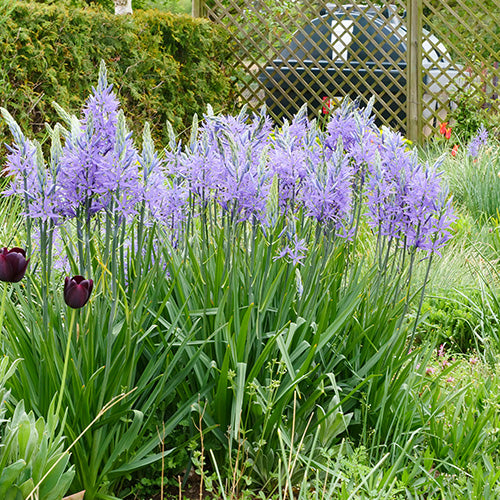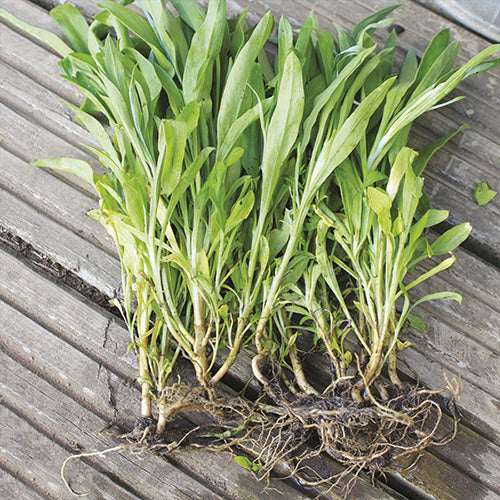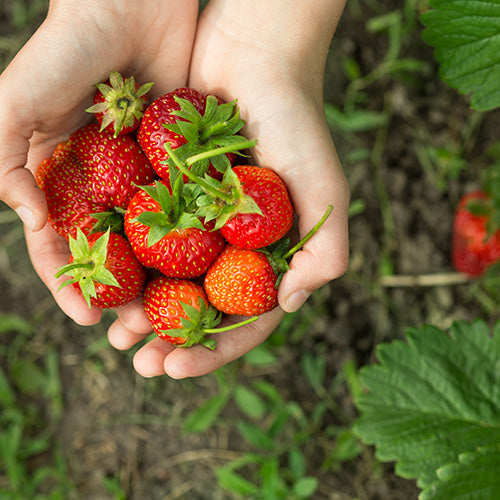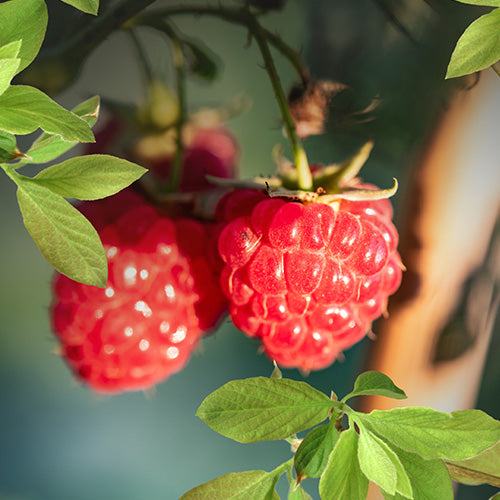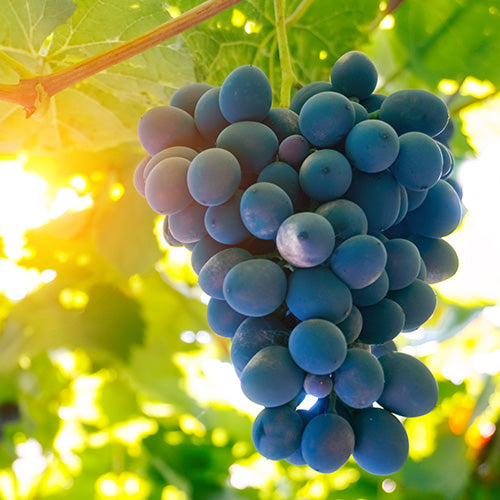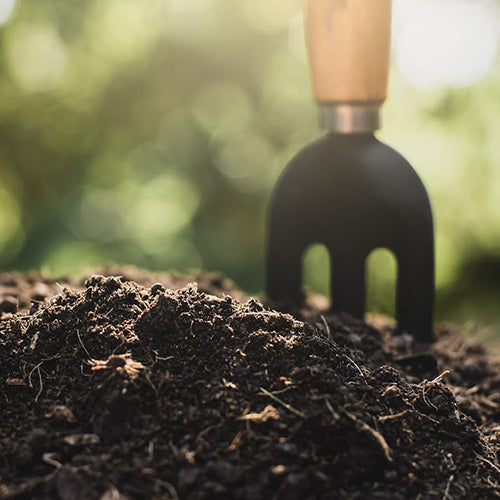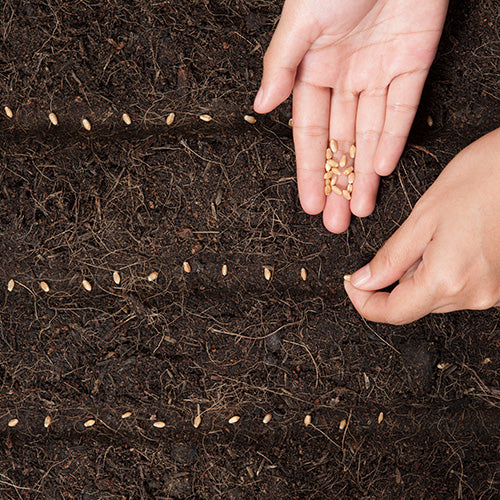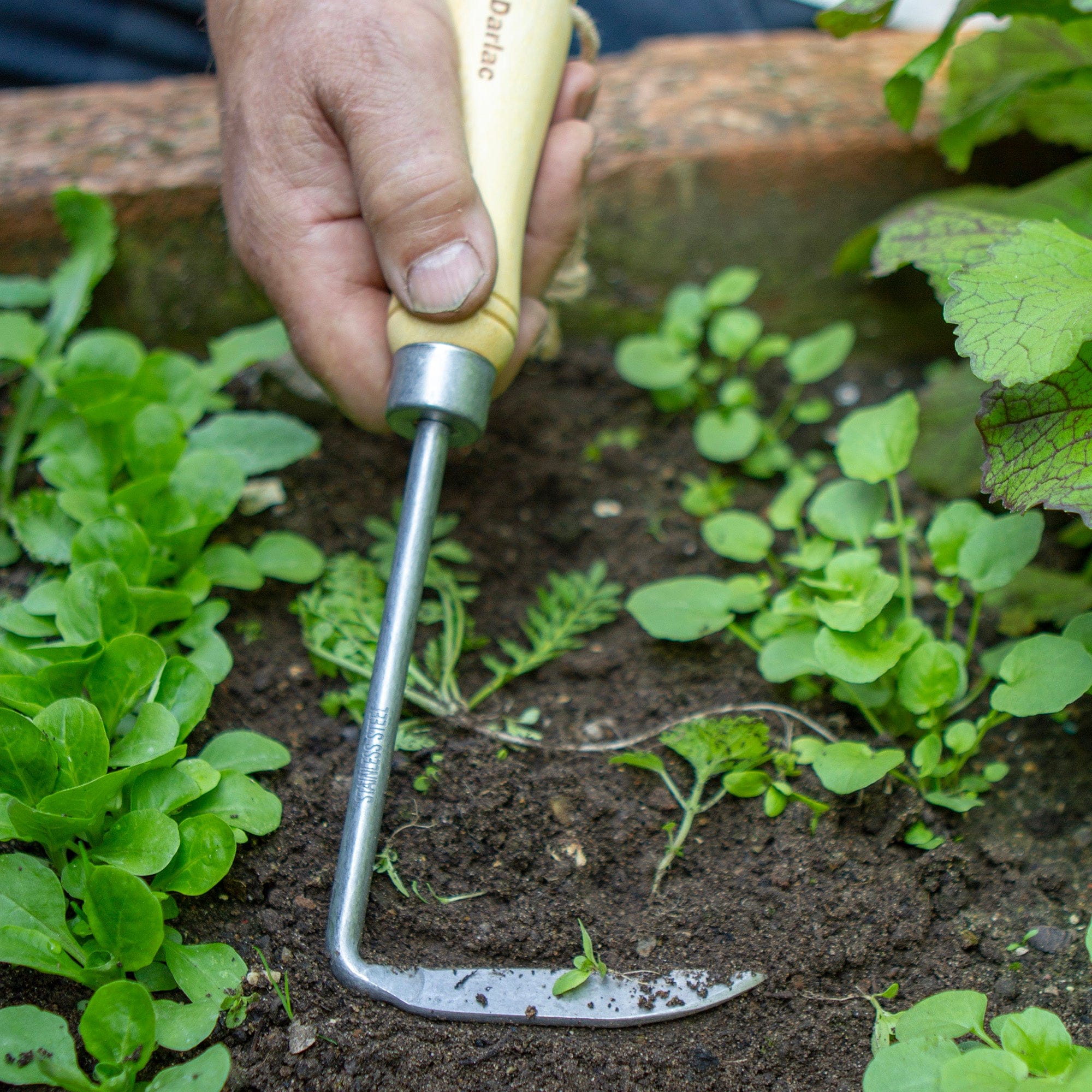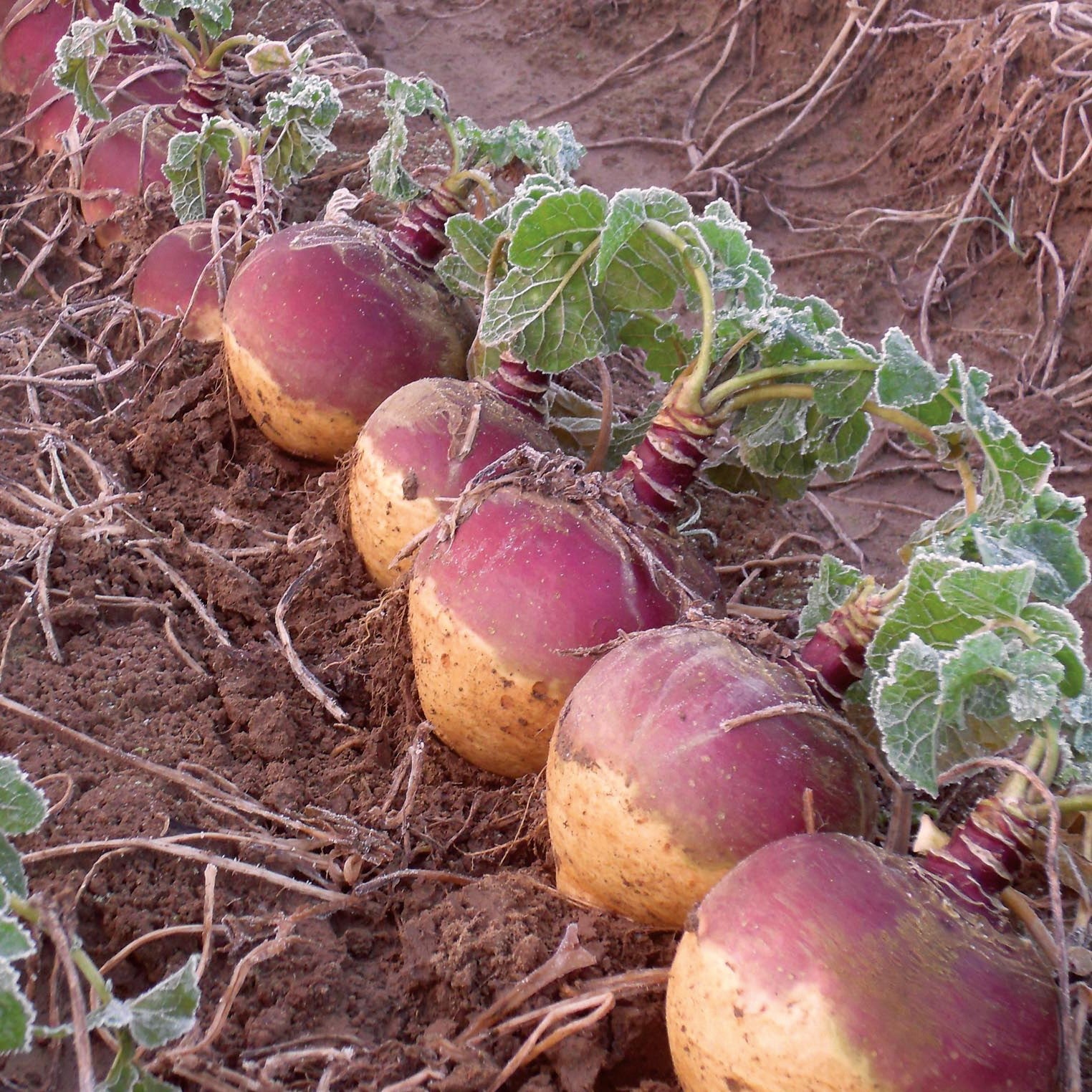
Swede Seeds
What's in a name? The swede is originally an abbreviation of Swedish turnip where the vegetable is thought to have originated and this is how they’re known in most of the south of England. However in many areas of Northern England the Midlands the South West and Ireland they're called turnips; in Scotland they're the neeps of Burns Night. You'll find them called rutabaga in the US and Canada from a Swedish dialect meaning 'stumpy root'. Here we’re looking at the larger yellow or creamy-fleshed type with skins turning purple towards the tops not the smaller smoother often brightly coloured turnip.
A member of the brassica family they were originally a cross between the cabbage and the turnip used as a winter feed for livestock and eaten by the poor. Swedes were the Halloween lantern of choice for Scotland Ireland and North-East England in some areas known as a 'baigie lantern' until the much easier to carve American pumpkin took over in the last couple of decades. Whatever you call them this traditional hearty winter veg is easy to grow and very hardy.
